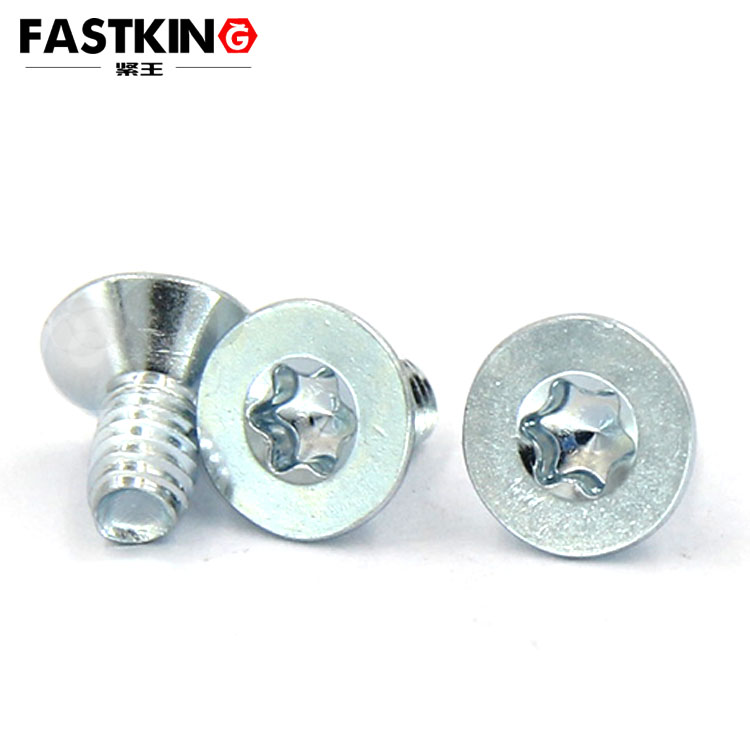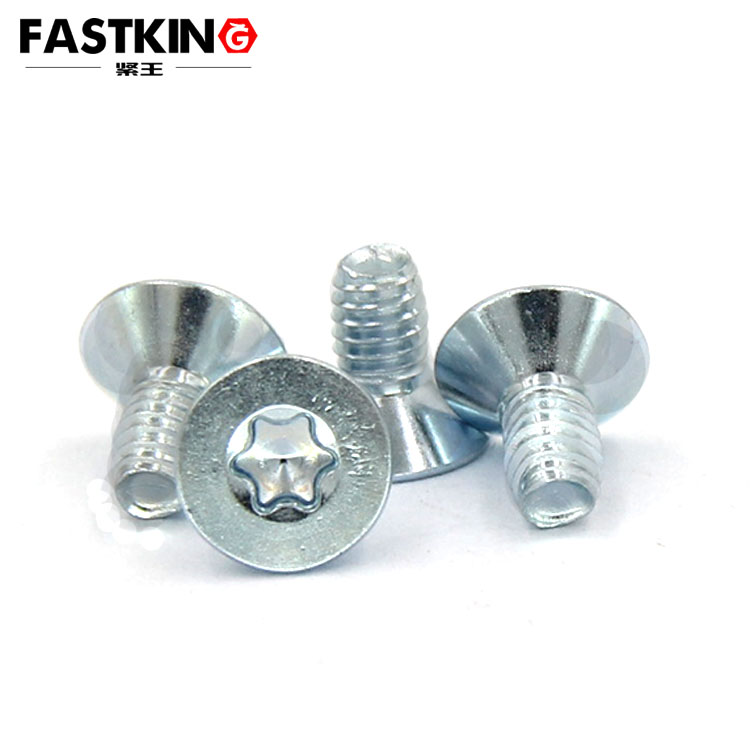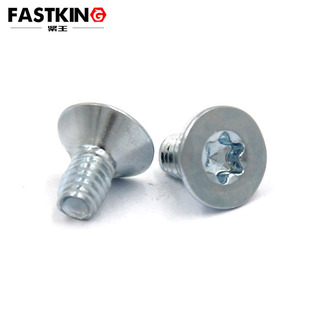- Torx screw,torx machine screw,torx self tapping screw
- sales@jlfastener.com
Bucklesk inner torx triangle tooth screw
Torx Rolling Screw
Bucklesk inner torx triangle tooth screw
- Description:In the fastener market, countersunk-head internal hexagon triangular-thread screws, relying on the triple structural innovation of "countersunk head + internal hexagon socket + triangular thread", not
From the perspective of structural design, every detail of the countersunk-head internal hexagon triangular-thread screw is precisely tailored to practical needs. The "countersunk head" design is its most intuitive feature — the head is conical, and after installation, it can be completely embedded in the counterbore of the connected component, keeping the component surface flat. This not only avoids the collision risk caused by protruding screws but also improves the overall aesthetics of the product. This characteristic makes it indispensable in scenarios with extremely high requirements for surface flatness, such as furniture manufacturing (e.g., cabinet doors, drawer slides) and electronic device casings (e.g., laptop, tablet bodies). For example, in the connection between a smartphone's middle frame and screen, the countersunk head design ensures seamless fitting between the screen and the middle frame without affecting the overall slimness of the phone body.
The "internal hexagon socket" structure endows the screw with stronger operational reliability and safety. Compared with slotted (flat-head with single slot) and Phillips-head designs, the internal hexagon socket forms a tight engagement with a dedicated tool through its hexagonal curved notch, increasing torque transmission efficiency to over 95%. It can withstand greater fastening force and effectively prevent screw damage caused by "slippage" (tool slipping out of the slot). Meanwhile, the internal hexagon socket requires a dedicated wrench for operation, which can prevent unauthorized disassembly by non-professionals. In scenarios such as security equipment (e.g., surveillance cameras) and precision instruments (e.g., medical detectors), it can protect the internal structure of the equipment from arbitrary modifications, enhancing usage safety.
The "triangular thread" design is the core advantage that distinguishes countersunk-head internal hexagon triangular-thread screws from ordinary screws. Traditional screws mostly have trapezoidal threads, which rely on large pre-tightening force to achieve stable connection and are prone to thread stripping in soft materials (e.g., plastic, aluminum alloy). In contrast, the triangular thread, with its triangular cross-sectional profile, 挤压 (squeezes) the connected component through the thread crest during screwing, causing slight plastic deformation. This not only increases the friction between the thread and the material but also enables self-"tapping" to adapt to non-standard threaded holes, significantly improving connection stability. Data shows that in plastic component connections, the anti-loosening effect of triangular-thread screws is more than 30% better than that of ordinary trapezoidal-thread screws. Moreover, no additional tapping process is required during installation, which can shorten assembly time by approximately 20%.

In terms of performance, the "versatility" and "durability" of countersunk-head internal hexagon triangular-thread screws are particularly prominent. In terms of material, they are mostly made of high-strength carbon steel (e.g., 10B21) and 304 stainless steel. After heat treatment, their hardness can reach HRC 32-38, enabling them to withstand a certain degree of impact load while having good corrosion resistance. For example, in automotive interior parts (e.g., instrument panel panels, door trim panels), countersunk-head internal hexagon triangular-thread screws made of 304 stainless steel can be used for a long time in the humid environment inside the car without rusting. At the same time, the triangular thread can firmly lock the plastic interior parts, avoiding loose noises caused by vehicle vibration during driving.
From the perspective of application scenarios, countersunk-head internal hexagon triangular-thread screws have a wide adaptation range covering multiple core fields. In the electronic and electrical industry, they are used for connecting core components of printers and copiers — the countersunk head design ensures no protruding parts interfere with the operation of the core, while the triangular thread prevents plastic gears from loosening due to vibration. In the architectural decoration field, they are used for the installation of aluminum gusset ceilings and integrated wall panels — the countersunk head structure keeps the decorative surface flat and uniform, and the triangular thread can be directly screwed into aluminum alloy profiles without pre-tapping, improving construction efficiency. In the medical device field, such as rehabilitation equipment (e.g., wheelchair armrests, walker brackets), countersunk-head internal hexagon triangular-thread screws not only ensure the armrest surface is flat and non-abrasive but also secure the bracket connection through the triangular thread, ensuring user safety.
However, to give full play to the performance of countersunk-head internal hexagon triangular-thread screws, attention must be paid to details during selection and installation. During selection, the appropriate specifications should be chosen based on the material of the connected component: if connecting plastic components, it is recommended to select triangular-thread screws with smaller thread pitches (e.g., M3×6) to avoid plastic cracking caused by excessively large thread pitches; if connecting metal components, the corresponding counterbore depth must be matched to ensure the countersunk head is completely embedded — usually, the counterbore depth should be 0.5-1mm greater than the height of the screw head to prevent the head from being exposed. During installation, a torque wrench must be used to control the force to avoid countersunk head breakage or component deformation due to excessive force. At the same time, ensure the counterbore is free of impurities to prevent them from affecting the screw embedding precision.

The emergence of countersunk-head internal hexagon triangular-thread screws is a typical example of fastener design evolving from "single-function" to "multi-function integration" — it not only meets the aesthetic demand for flat surfaces but also enhances fastening reliability and simplifies the installation process. As industrial manufacturing imposes increasingly high requirements for "refinement" and "efficiency", the application scenarios of this type of screw will be further expanded. For instance, in the connection of new energy vehicle battery pack casings, it can balance the flatness of the casing and waterproof sealing, providing dual protection for the safe operation of the equipment. In the future, with material upgrades (e.g., using titanium alloy to improve lightweight properties and corrosion resistance) and structural optimization (e.g., adding anti-slip coatings), countersunk-head internal hexagon triangular-thread screws will play a key role in more high-end manufacturing fields.


